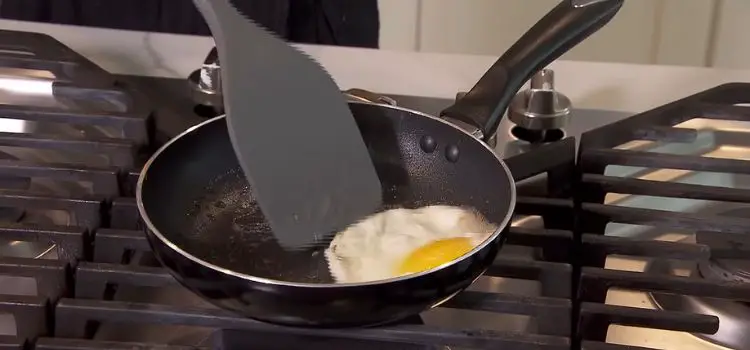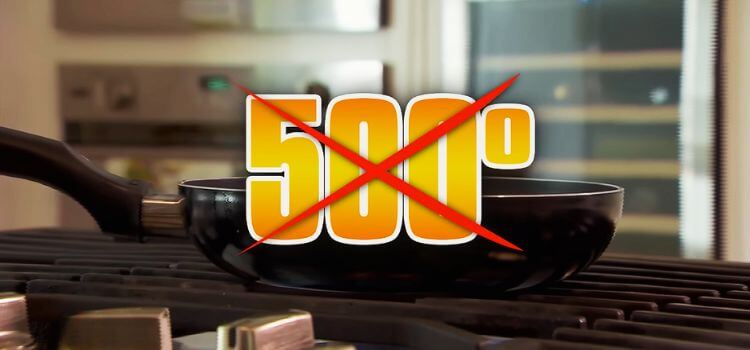
Teflon is a common name in most kitchens today, thanks to its non-stick magic that makes cooking and cleaning a breeze. From frying pans to baking sheets, Teflon-coated cookware has become a favorite for many home cooks and professional chefs alike.
However, as its popularity has grown, so have concerns about its safety. People are now questioning whether using Teflon for cooking could harm their health.
In this article, we will explore the story of Teflon—how it was created, how it works, and why there are worries about its safety. We will also look at what studies say about Teflon, what happens when it is overheated, and explore some safer alternatives for your kitchen.
What is Teflon?
Teflon is a well-known material that many people associate with non-stick cookware. Originally developed by the chemical company DuPont in the 1930s, Teflon is the brand name for a synthetic polymer called polytetrafluoroethylene, or PTFE. This substance is famous for its slippery surface, which makes it perfect for coating frying pans and other kitchen utensils, allowing food to cook without sticking.
Teflon’s journey from the lab to our kitchens began in the 1960s when it was first used to create non-stick cookware. However, Teflon’s uses extend far beyond the kitchen. It has been applied in various industries, including electronics, where it’s used to insulate wiring, in the automotive sector for its ability to reduce friction in moving parts, and even in medical devices due to its non-reactive and non-toxic properties. Despite its widespread use, questions about the safety of Teflon, especially when heated, have led to growing concerns among consumers.
How Does Teflon Work?
Teflon is famous for its non-stick properties, which make cooking and cleaning much easier. The science behind this is quite simple: Teflon’s surface is extremely smooth and slippery, which prevents food from sticking to it. When you cook with Teflon-coated pans, the food slides around easily, allowing for a hassle-free cooking experience.
The process of applying Teflon to cookware involves coating the pan with the Teflon material, which is then bonded to the surface through a heat treatment process. This ensures that the Teflon sticks firmly to the cookware, creating a durable non-stick surface that can withstand regular use.
Teflon coatings are generally quite durable under normal cooking conditions. However, they can wear down over time, especially if exposed to high heat or scratched with metal utensils. To make sure your Teflon cookware lasts longer, it’s important to use it properly and avoid overheating or using sharp objects on it.
Safety Concerns Associated with Teflon
Teflon is made from a chemical called PTFE, or polytetrafluoroethylene. This chemical is known for being stable and non-reactive, which is why it’s used to create non-stick surfaces. However, the safety of Teflon comes into question when it is exposed to high temperatures. While PTFE is generally stable under normal cooking conditions, it can start to break down and release fumes when overheated, which can be harmful if inhaled.
One of the key concerns with Teflon is related to a chemical called PFOA, or perfluorooctanoic acid, which was once used in the production of Teflon. PFOA has been linked to several health issues, including cancer and other serious conditions. Due to these concerns, manufacturers have phased out the use of PFOA in Teflon production, and cookware made after 2013 is typically PFOA-free.
The difference between PFOA and PTFE is important to understand. PFOA was used in the manufacturing process, but it is not present in the final Teflon product. PTFE is the main substance that makes Teflon non-stick. The health risks associated with PFOA were significant enough that its use has been largely discontinued.
Research and studies have been conducted to investigate the safety of Teflon, especially in relation to its use in cookware. Some studies have shown that when Teflon is heated to very high temperatures (above 500°F or 260°C), it can start to decompose and release fumes that may cause flu-like symptoms in humans, often referred to as “Teflon flu.” These fumes are particularly dangerous to pet birds, which can die from exposure.
What Happens When Teflon is Overheated?

When Teflon is overheated, it can release fumes that may cause a condition known as “Teflon flu” or polymer fume fever. This phenomenon occurs when Teflon-coated cookware is heated to very high temperatures, usually above 500°F (260°C). The fumes released can cause flu-like symptoms in humans, including headaches, chills, and fever. While these symptoms are usually temporary, they can be uncomfortable and alarming.
The fumes from overheated Teflon are especially dangerous to pet birds. Birds have very sensitive respiratory systems, and exposure to these fumes can be fatal to them. Even small amounts of fumes can cause serious harm, so it’s important to be extra cautious if you have pet birds in your home.
To avoid the risks associated with overheating Teflon, there are a few practical steps you can take. First, always use Teflon cookware on medium or low heat. High heat is usually unnecessary for most cooking tasks and can lead to overheating. Second, never leave an empty Teflon pan on a hot stove. Without food or liquid in the pan to absorb the heat, the temperature can rise quickly, increasing the risk of releasing harmful fumes. Lastly, make sure your kitchen is well-ventilated when cooking with Teflon to help disperse any fumes that might be released.
For more information
Regulatory and Industry Response
In response to the growing concerns about the safety of Teflon, particularly due to the use of PFOA, government agencies like the Environmental Protection Agency (EPA) in the United States have taken significant steps to regulate its use. The EPA launched a voluntary program called the PFOA Stewardship Program in 2006, which aimed to eliminate the use of PFOA in the manufacturing process by 2015. This program involved major chemical companies, including those producing Teflon, and was successful in phasing out the use of PFOA in cookware and other consumer products.
As a result of these regulatory actions, the cookware industry has made substantial changes. Cookware manufacturers have reformulated their non-stick coatings to be PFOA-free, ensuring that the final products are safer for consumers. Today, most non-stick cookware available on the market is labeled as “PFOA-free,” meaning that it does not contain this harmful chemical. This shift in production has addressed many of the health concerns associated with Teflon.
Current standards for Teflon cookware safety focus on the absence of PFOA and the stability of the non-stick coating under typical cooking conditions. When purchasing non-stick cookware, consumers should look for labels that clearly state the product is PFOA-free. It’s also important to choose cookware from reputable brands that adhere to safety standards and have a track record of producing high-quality, durable products. Additionally, consumers should follow the manufacturer’s guidelines for proper use and care to ensure the longevity and safety of their Teflon cookware.
Alternatives to Teflon Cookware
For those concerned about the potential risks associated with Teflon, there are several alternative types of cookware that offer non-stick properties without the use of PTFE or PFOA.
Ceramic Coatings:
Ceramic-coated cookware is a popular alternative to Teflon. These pans are made with a ceramic-based coating that provides a non-stick surface without the use of synthetic chemicals. Ceramic cookware is known for being non-toxic and environmentally friendly. It also has the advantage of being able to withstand higher temperatures than Teflon without releasing harmful fumes. However, ceramic coatings can be less durable over time, and the non-stick surface may wear down with heavy use.
Cast Iron:
Cast iron cookware offers a great non-stick alternative, particularly when it’s seasoned correctly. The seasoning process involves coating the pan with oil and heating it to form a natural non-stick layer. Known for its exceptional durability, cast iron can last for generations with proper care. Its superior heat retention makes it perfect for high-temperature cooking. However, cast iron is quite heavy and needs consistent maintenance to avoid rust.
Stainless Steel:
Stainless steel is a versatile and non-toxic cookware option that many professional chefs prefer. While it doesn’t have the same natural non-stick properties as Teflon, with a little practice, stainless steel can be used effectively for most cooking tasks. It’s durable, resistant to scratching and staining, and can be used at very high temperatures without any risk of releasing harmful substances. Cooking with stainless steel requires more skill, as food is more likely to stick if the pan is not properly heated or oiled.
Eco-Friendly Options:
There are also a growing number of eco-friendly non-stick cookware options on the market. These products use safer materials, such as silicone or natural stone, to provide non-stick surfaces without the use of harmful chemicals. For example, some eco-friendly pans use a combination of ceramic and titanium coatings that offer excellent non-stick performance and durability. These options are often more expensive, but they appeal to consumers looking for both safety and sustainability in their cookware.
Conclusion
In this article, we’ve explored the safety concerns surrounding Teflon cookware, including the potential risks of overheating, the regulatory actions taken to eliminate harmful chemicals like PFOA, and the various alternative cookware options available. While Teflon has been a convenient choice for non-stick cooking, it’s important to be aware of the precautions needed to use it safely, such as avoiding high temperatures and ensuring proper ventilation.
Overall, Teflon can still be a safe option for many home cooks when used correctly. However, for those who prefer to avoid any potential risks, there are plenty of other great alternatives like ceramic-coated pans, cast iron, and stainless steel. These options not only offer similar non-stick benefits but also come with their own unique advantages.
As you consider your next cookware purchase, think about your cooking habits, the types of meals you prepare, and any health or safety concerns you may have. By making informed choices, you can ensure that your kitchen remains a safe and enjoyable space for cooking.
FAQs
Is Teflon safe at low temperatures?
Yes, Teflon is generally safe at low to medium temperatures. It only becomes a concern when exposed to very high heat, typically above 500°F (260°C), where it can start to break down and release fumes. For everyday cooking at lower temperatures, Teflon-coated cookware is considered safe to use.
What are the signs of Teflon damage?
Signs of Teflon damage include scratches, peeling, or flaking of the non-stick coating. These can occur over time, especially if metal utensils are used or if the pan is overheated. If you notice any of these signs, it may be time to replace your Teflon cookware to avoid potential health risks.
Can scratched Teflon pans release harmful chemicals?
Scratched Teflon pans can potentially release small amounts of PTFE particles into your food, though the health risks are generally low. However, if the pan is heavily scratched or the coating is peeling, it’s best to replace it to avoid any potential exposure to harmful chemicals, especially when cooking at higher temperatures.
How can I dispose of old Teflon cookware?
Disposing of old Teflon cookware should be done carefully. If the cookware is damaged or heavily worn, it’s best not to donate it. Instead, check with your local waste management facility to see if they accept non-stick cookware for recycling. If recycling is not an option, it should be disposed of in your regular trash, but be sure to follow any specific guidelines provided by your local waste authority.
Leave a Reply